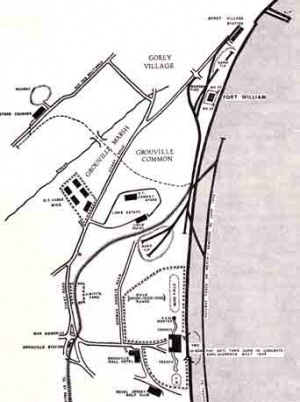On 1 July 1940 German forces invaded the Channel Islands and Adolf Hitler decreed that the Islands should be made into ‘impregnable fortresses’, using the Organisation Todt (OT), the state construction agency.
Old railway system reactivasted
This decree came when the petrol shortage had become acute, with vehicles taken off the road. The Germans imported more than 600 horses for their own use and decided to reactivate the defunct Jersey railway system on a variety of narrow gauge tracks, to move building materials – sand, gravel and cement – rapidly to those areas where strongpoints were to be created.
Spurs were opened to link quarries, sand pits and docks, and often laid across fields, farmyards and even front gardens.
The laying of the track, excavation of cuttings and tunnels and the building of embankments were carried out by the OT's forced labourers, supplemented by French colonial prisoners of war from North Africa. In 1942 Russian and Polish prisoners of war came from the Eastern Front and these ragged, ill-shod unfortunates were literally treated as slave labour.
The reactivated eastern line started from the original Grouville station, from where there were spurs to Les Maltières quarry, Fort William, the Links Hotel and Gorey Harbour. Sand from the Royal Bay of Grouville and granite chippings from the quarry (the granite crusher stands today as a block of flats in Chemin des Maltières) were carried on a narrow gauge, 60 cm track in trains of ten side-tipping wagons to Gorey Harbour and tipped into barges for shipment to town, or St Aubin.
The railway’s engines were mainly imported from Germany. Wood-burning steam engines were used when diesel fuel stocks ran low. Many pre-dated the First World War and had been built for the Chemins de Fer de Finisterre in Brittany.
The trains often injured islanders and their animals and on 10 June 1943 a Mr Coutanche, a farmer, was killed by a train carrying granite chippings when, moving his cows across the line and being stone-deaf, he did not hear the train’s approach. By 1943 Jersey was criss-crossed with OT railways, road traffic being confined to military vehicles, local government officials and doctors.
In the space of just two years, the occupiers and their reluctant workforce had used the railways to construct reinforced concrete coastal defence strongpoints, and bunkers with more batteries inland. The railways also served a number of naval radar towers, two bakeries and even a farm.
Many planned fortifications were incomplete and actually unusable by the time the OT labourers began to be withdrawn late in 1943 to work on the defences in Europe, including the rest of the Atlantic Wall. After the Liberation, serious consideration was given to maintaining these railways, but it was recognised that they were unlikely to be economically viable and the tracks were lifted (mostly by German prisoners of war) with the engines and rolling stock either broken up for scrap, or shipped back to France.
